There are many types of ants, but two of the most common are the black garden ant and the carpenter ant. Both of these types of ants can be found in North America. They both have different habits and characteristics that make them unique. This article will discuss the differences between black garden ants and carpenter ants.
What Are Carpenter Ants?
Features
Carpenter ants are large, black, or red-black ants that can measure up to 1/2 inch in length. They are found throughout North America but prefer moist areas such as those near water sources and decaying wood. They nest in damp, rotted wood and build tunnels inside the wood to make their homes.
Carpenter ants have three body segments: head, thorax, and abdomen. Their heads contain two compound eyes, two antennae, and a mandible used for feeding. The thorax consists of three sections called the mesosoma which allows them to move their legs while walking. The abdomen is elongated and contains the reproductive organs.
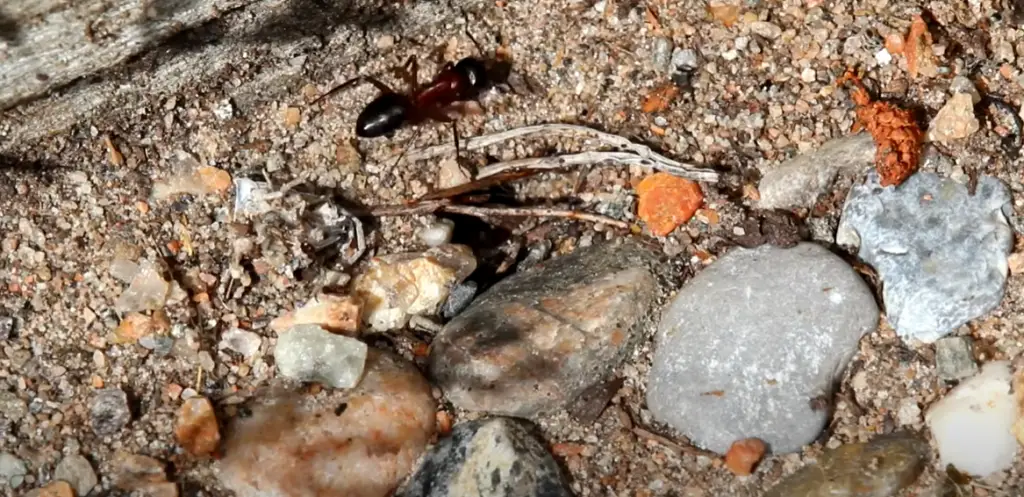
Carpenter ants communicate with each other through chemical signals called pheromones. These pheromones are released by the ants, usually through the antennae, and contain information about food sources, nest locations, and other important details for their colony.
Carpenter ants can cause significant damage to wooden structures if left unchecked. They can excavate tunnels in wood, weakening its structural integrity over time and compromising its stability. In addition to damaging the wood, carpenter ants can also contaminate food sources and spread disease. This is why it is important to take steps to prevent or eliminate carpenter ant infestations in your home.
Climate and Habits
Carpenter ants prefer warm, humid climates and are most active during the summer months. During this time they search for food sources such as dead insects, sweet substances, or other proteins. They can travel up to 300 feet from their nest in search of food.
Carpenter ants build nests by excavating wood with their mandibles. The tunnels they create are smooth on the inside and appear to be perfectly round. Carpenter ants often enter buildings through cracks in foundations or around door and window frames. Once inside, they will set up a new colony and begin scavenging for food.
Foods and Prevention
Carpenter ants prefer sweet foods such as fruit, honeydew, and sugary substances. They are also attracted to proteins such as meats, pet food, and fats. It is important to keep food items covered and stored in sealed containers to prevent carpenter ants from accessing them. In addition to eliminating access to food sources, it is also important to eliminate moisture sources around your home.
Carpenter ants need moisture to survive so removing any standing water or wet wood can help reduce their populations. Another way to deter carpenter ants is by sealing cracks and crevices in the foundation of your home with caulk or foam insulation. Finally, if you suspect that you have a carpenter ant infestation, contact a pest control professional as soon as possible to help eliminate the problem [1].
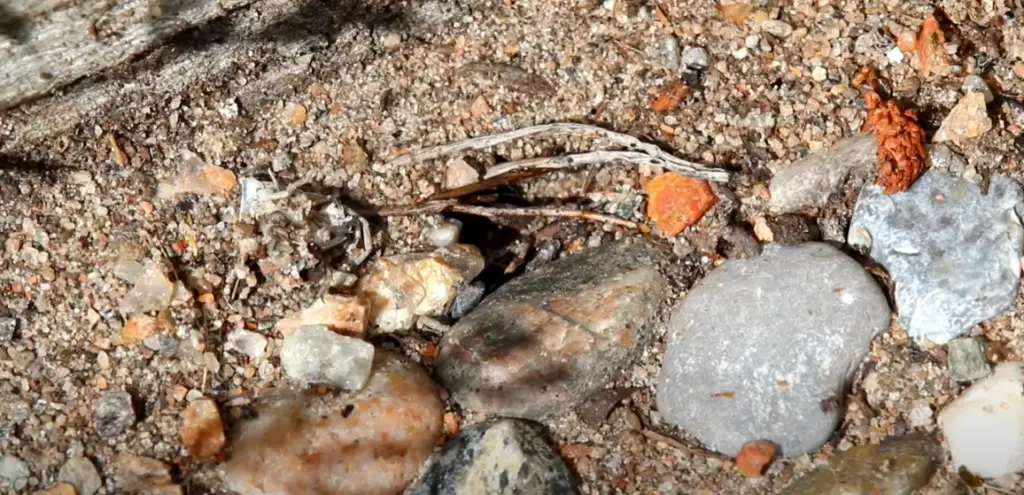
What Are Black Ants?
Features
Black ants are a species of ant that belong to the Formicidae family. They are small in size, typically ranging from one to five millimeters long. They have three body parts: the head, thorax, and abdomen. Black ants can be found all over the world and come in a variety of colors including black, brown, yellow, and red.
Black ants feed on other insects, sweet foods such as honeydew and nectar, plant material like leaves and stems, and sometimes dead animals or decaying organic matter. Their main predators are birds, lizards, frogs, mice, beetles, and spiders. Most species of black ants form colonies with large numbers of workers that will cooperate to build tunnels underground or structures above the ground.
Black ants typically have long legs and antennae which they use to sense their environment. They also possess mandibles, which are used to grasp food or manipulate objects. Some species of black ants have stingers, which can be used for defense against predators or enemies. Generally, black ants live outdoors in warm climates but can sometimes make their way indoors where they can become a nuisance.
Climate
Black ants prefer to live in warm climates but can be found all over the world. They are most abundant in tropical and subtropical regions, where they will build large colonies with intricate tunnels underground or structures above the ground. In cooler climates, black ants may seek shelter indoors from the cold weather.
Behavior
Black ants display a variety of behaviors that are used for communication within the colony and to protect themselves from predators. For example, some species of black ants use pheromones as a way to identify each other and communicate danger. When threatened by a predator, many species of black ants will release an alarm pheromone which causes nearby workers to become active and defend the nest. Some species of black ants also use their stingers for defense. Black ants are also known for their cooperative behavior. They often work together in large numbers to build tunnels and structures, gather food, and protect the nest from predators.
Foods
Black ants feed on a variety of foods including other insects, sweet nectar and honeydew, plant material such as leaves and stems, and sometimes dead animals or decaying organic matter. They have also been known to eat pet food and human food scraps.
Prevention
To prevent black ants from entering your home, it is important to seal any cracks or crevices in the walls or foundation and make sure that doors and windows are securely closed. It can also help to remove any food sources such as pet food, crumbs, and spilled liquids that could attract them. Additionally, using ant baits and traps can be an effective way of controlling black ant populations around your home. If you have a large infestation of black ants inside your home, contact a professional pest control service for assistance.
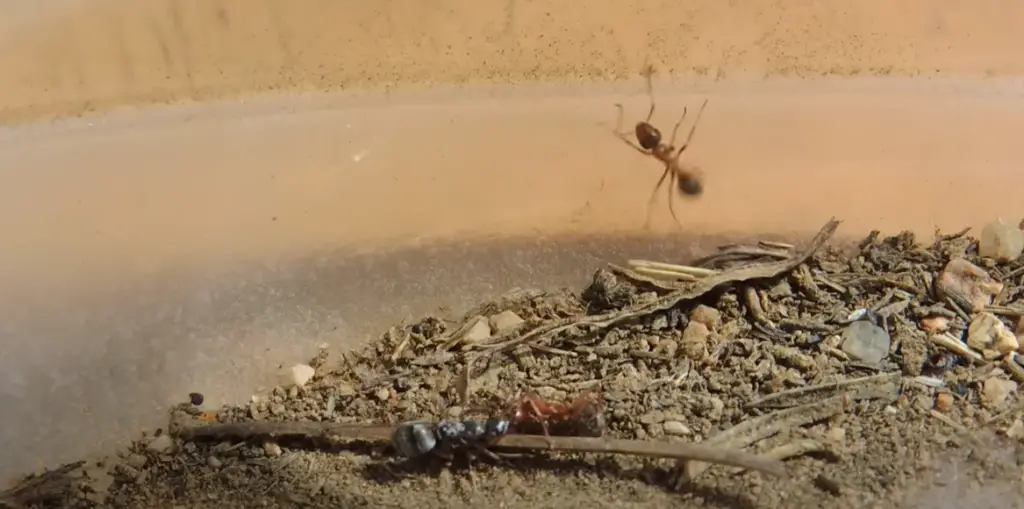
Key Differences Between Carpenter Ant vs Black Ant
Carpenter Ant vs Black Ant: Genus
The Black Ant belongs to the genus Formica, whereas Carpenter Ant is scientifically classified under the genus Camponotus.
Carpenter Ant vs Black Ant: Appearance
Black ants are small in size and black or brownish-black in color with a glossy exoskeleton. Carpenter ants are larger than black ants and vary from reddish-brown to black hue.
Carpenter Ant vs Black Ant: Nesting Habits
Black ants live in colonies of about 20,000 members that nest close to the ground. On the other hand, Carpenter ants build nests inside wood where they can excavate galleries for storage and protection of their young. They also build above ground colonies near trees or logs.
Carpenter Ant vs Black Ant: Diet
Black ants feed on honeydew, other insects, and seeds whereas Carpenter ants hunt for live prey such as other insects and spiders. Both of them also consume human food such as sweet items like cakes, fruits etc.
Carpenter Ant vs Black Ant: Behavior
Black ants are scavengers and are mainly found in the kitchen or any other area where there is an availability of food items. They generally search for food by forming long trails. Unlike black ants, Carpenter ants don’t form long trails while they look out for food but send workers to scout territory beyond the nest boundaries to gather resources required by the colony.
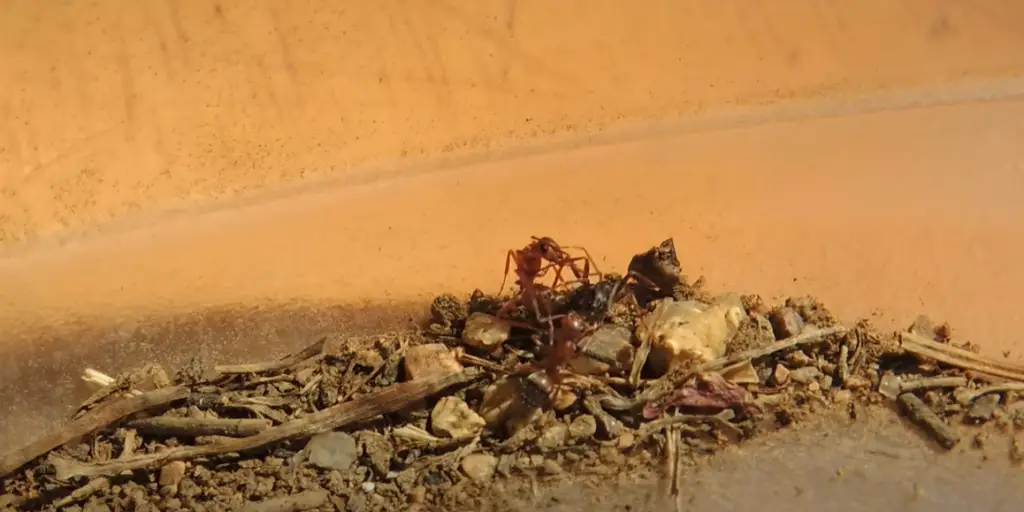
Carpenter Ant vs Black Ant: Damage
Black ants usually don’t cause much harm to properties or structures. However, Carpenter ants can be destructive as they tend to carve wood for nesting purposes and may damage wooden structures such as furniture and doors.
Carpenter Ant vs Black Ant: Control
Both types of ants can be controlled by insecticides and baits. For black ant control, it is important to get rid of any food sources around the house so that they don’t return. On the other hand, Carpenter ant control involves locating their nests and using specialized insecticides specifically designed for them. Additionally, sealing off any points of entry into the home along with proper sanitation will help keep Carpenter ants at bay.
In conclusion, both black ants and carpenter ants are common household pests. While they may have some similarities, there are also significant differences between them in terms of their genus, appearance, nesting habits, diet, behavior, and ability to cause damage to properties. Therefore it is important to understand the differences to ensure an effective way of dealing with each type of ant [2].
FAQ
What is the difference between carpenter ants?
Carpenter ants are divided into two categories: large, or “true” carpenter ants and small, or “little” carpenter ants. Large carpenter ants are the species typically associated with wood damage in homes. They range from 1/2-inch to 5/8-inch long and have blackish bodies. Small carpenter ants, on the other hand, range from 1/8-inch to 1/4-inch long and may be either blackish or reddish depending on the species. While they can still cause minor damages, they are not as destructive as large carpenter ants.
How do I know if I have a Carpenter Ant infestation?
The presence of sawdust-like material near windows, doors, and other points of entry, as well as the discovery of swarms of flying ants or large dark ants in your home, are telltale signs of a carpenter ant infestation. If you suspect that you may have an infestation, it is important to contact a pest control professional for an inspection and treatment plan.
How do I prevent Carpenter Ants from entering my home?
The best way to prevent carpenter ants from entering your home is by making sure to seal any cracks or crevices in walls, window frames, and doorways. Additionally, cutting back tree branches and shrubs that may be touching your house can help reduce access points for these pests. Finally, removing excess sources of moisture, such as leaky pipes and clogged gutters, can help eliminate the conditions that carpenter ants need to survive.
Are black ants harmful?
While some black ants may be harmless, carpenter ants are a species of large black ant that can cause significant damage to your home. Carpenter ants can chew through wood, insulation, and even electrical wiring. If you notice any signs of an infestation, it is important to contact a pest control professional right away before the damage gets worse.
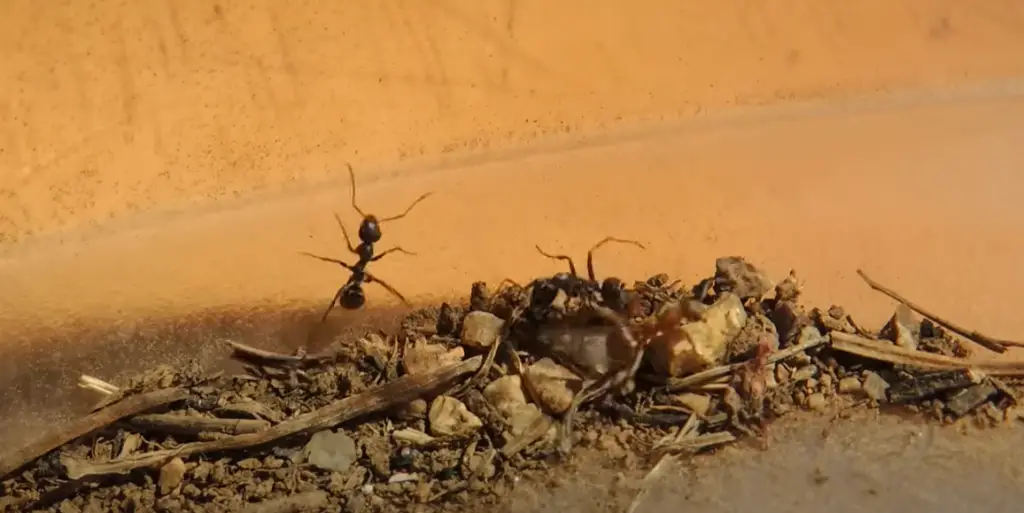
Where do Carpenter Ants nest?
Carpenter ants typically nest inside of moist or decaying wood and preferentially build their nests in areas with ample access to food sources. This could include stumps, logs, tree branches, decks, porches and even attics and crawl spaces in homes. It is important to inspect these areas regularly to ensure that there are no potential nesting sites for carpenter ants.
How can you tell a black ant from a carpenter ant?
Large, black ants are usually the species associated with carpenter ants. They range from 1/2-inch to 5/8-inch long, have blackish bodies, and are often mistaken for other types of large black ants. Smaller reddish or blackish ants can also be carpenter ants, but they are less likely to cause significant damage to homes since they are not as destructive as large carpenter ant species. The best way to determine if you have a carpenter ant infestation is by contacting a professional pest control service for an inspection and treatment plan.
What treatments are available for Carpenter Ants?
There are several treatments available for carpenter ant infestations, including baiting and chemical applications. Baiting involves providing an attractive food source that the carpenter ants will take back to their nest. Chemical applications involve spraying insecticides in and around the home to kill off any existing colonies of carpenter ants. Professional pest control services should be consulted for both baiting and chemical treatments, as they can help determine which treatment is best suited for your particular situation.
Are there natural remedies for Carpenter Ants?
Yes, there are several natural remedies available for treating a carpenter’s ant infestation. These include using clove oil or citrus-based products to deter the ants from entering your home, using diatomaceous earth to create a barrier around the perimeter of your house, and even encouraging predators such as lizards or frogs into your backyard to help eat the ants. However, it is important to remember that these natural remedies may take longer than chemical or baiting treatments and should only be used as a last resort.
What ants are mistaken for carpenter ants?
Carpenter ants are often mistaken for other species of large black ants, such as the odorous house ant or the pharaoh ant. Additionally, smaller reddish or blackish ants may be confused with carpenter ants as well. The best way to identify if you have a carpenter ant infestation is by calling a professional pest control service for an inspection and treatment plan.
Do black carpenter ants bite humans?
No, black carpenter ants do not bite people. They may attempt to bite if they are threatened but usually, they just crawl away and avoid contact with humans. Carpenter ants also don’t sting or spread diseases like some other types of ant species do, so you don’t have to worry about them causing any harm to you or your family. However, it is still important to eliminate the infestation as soon as possible to minimize potential damage to your home or property.
Why am I seeing big black ants in my house?
If you are seeing large black ants in your house, you likely have a carpenter ant infestation. Carpenter ants typically nest inside of moist or decaying wood and preferentially build their nests in areas with ample access to food sources. This could include stumps, logs, tree branches, decks, porches, and even attics and crawl spaces in homes. If you notice any signs of an infestation such as large, black ants or sawdust piles around your home, it is important to contact a pest control professional right away before the damage gets worse.
What should I do if I find a large carpenter ant nest?
If you find a large carpenter ant nest in or around your home, it is important to contact a professional pest control service for an inspection and treatment plan. The treatments available for carpenter ants may include baiting and chemical applications, which should be handled by trained professionals. In addition, if the nest is located inside an area of your home that can’t be treated with pesticides, such as an attic or crawl space, then the best course of action is to have the entire area sealed off from further infestation. This will help prevent any future damage from occurring and keep your family safe from harm.
Are black carpenter ants harmful?
Yes, black carpenter ants can be harmful to people and property. While they don’t bite or spread diseases, they can cause significant structural damage by excavating wood to make tunnels for their nests. Additionally, if left unchecked the infestation can worsen over time and lead to more costly repairs. Therefore, it is important to contact a professional pest control service as soon as possible if you suspect a carpenter has an infestation in or around your home.
Useful Video: Carpenter ant and black garden ant
Conclusion
Black garden ants and carpenter ants are two of the most common types of ants found in homes and yards. Both species can be a nuisance, but they both have different behaviors and characteristics which make them unique. Black garden ants are smaller and tend to stay outside while carpenter ants are larger and often invade buildings. While there is no easy way to control ant infestations, understanding their behavior and identifying the species is key to developing an effective extermination plan. With professional help, you can rid your home or business of these pesky insects for good.
References:
- https://reliantpest.com/carpenter-ants-vs-black-ants/
- https://a-z-animals.com/blog/carpenter-ant-vs-black-ant/










Leave a Reply
View Comments